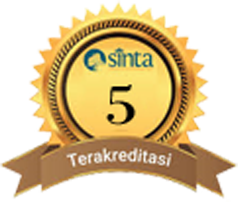MENULIS KARANGAN NARASI SEBAGAI WADAH MENGEMBANGKAN BERPIKIR KREATIF
DOI:
https://doi.org/10.22373/fitrah.v4i1.1998Keywords:
Writing, narrative writing, creative thinkingAbstract
Writing skills are indirect communication activities or often called nonverbal communication tools, writing has the same meaning as composing, such as writing narrative essays. Wiriting activities require a process of thinking and imagining to be able to convey what is meant to the reader. The activity of writing narrative essays has become a topic of discussion in Indonesian subjects to be studied and is useful for developing writing skills. Narrative essays whose sources of development are through things that are closely related to every day life encountered in yhe surrounding environment can provide many ideas for developing them into writing. Creative ability is generally understood as creativity. Often, the individual who is considered creative is a genuinely good synthetic thinker who builds connections between things that other people don’t notice spontaneously. A creative attitude is at least as important as creative thinking skills. Creativity is relative. This study uses a qualitative research approach where qualitative research as a scientific method is often used and carried out by a group of researchers in the social sciences, including education sciences. The data were analyzed using the percentage formula. The results showed that the percentage of students writing narrative essays was 94.59 % very well and students had completed classically.
References
Budinuryanta, dkk. 2008. Pengajaran Keterampilan Membaca. Jakarta: Universitas Terbuka.
Nurgiyantoro, Burhan. 2001. Menulis Secara Populer. Jakarta: Pustaka Jaya.
Costa. 2001. Developing Minds A Resource Book for Teaching Thinking. America: ASCD.
Tarigan, Henry Guntur. 2008. Membaca Sebagai Suatu Keterampilan Berbahasa. Bandung: Angkasa.
Munandar, Utami. 2009. Pengembangan Kreativitas Anak Berbakat. Jakarta: Rineka cipta.
Pusat bahasa kementerian pendidikan nasional. 2016. Kamus Besar Bahasa Indonesia Edisi V. Balai Pustaka.
Rohaeti, E. 2008. “Pembelajaran Dengan Pendekatan Eksplorasi Untuk Mengembangkan Kemampuan Berpikir Kritis Dan Kreatif Matematik Siswa Sekolah Menengah Pertama.” Bandung.
Sabandar, J. 2008. “‘Thinking Classroom’ Dalam Pembelajaran Matematika Di Sekolah.” In .
Siswono, Tatag Yuli Eko. 2004. “Identifikasi Proses Berpikir Kreatif Siswa Dalam Pengajuan Masalah (Problem Posing) Matematika Berpadu Dengan Model Wallas Dan Craetive Proble Solving (CPS) Di SMP Negeri 4 Dan SMP Negeri 26 Surabaya.” Pendidikan Matematika 6 (2).
Zainurrahman. 2011. Menulis Dari Teori Hingga Praktik. Bandung: Alfabeta.
Downloads
Published
How to Cite
Issue
Section
License
Authors who publish in this journal agree to the following terms:
- Authors retain copyright and grant the journal right of first publication with the work simultaneously licensed Attribution-NonCommercial-ShareAlike 4.0 International (CC BY-NC-SA 4.0) that allows others to share the work with an acknowledgment of the work's authorship and initial publication in this journal.
- Authors can enter into separate, additional contractual arrangements for the non-exclusive distribution of the journal's published version of the work (e.g., post it to an institutional repository or publish it in a book), with an acknowledgment of its initial publication in this journal.
- Authors are permitted and encouraged to post their work online (e.g., in institutional repositories or on their website) before and during the submission process, as it can lead to productive exchanges and earlier and greater citation of published work. (See The Effect of Open Acces)









